The "Cine-Eye" meets the "Cinema for the Ears"
The epochal silent film of Dziga Vertov (1929) with the congenial music
of Pierre Henry (1993)
Austrian debut performance of the integral version authorized by Pierre
Henry
Film: Dziga Vertov
Music: Pierre Henry
Idea and Sound Direction: Thomas Gorbach
Acoustic Staging: Günther Rabl
Lighting Technology: Michael Strohmann
Artistic Advising: Christoff Wiesinger
Sound Engineering Advising: Wolfgang Musil
Setup/Construction: Richard Bruzek, Stephan Roth
Special thanks to: Gilbert Handler, Tucherl
14/15 March 2009, TU Wien, Prechtlsaal
The Electroacoustic Project
Sponsored by GŁnther Rabl and Alexandra Sommerfeld
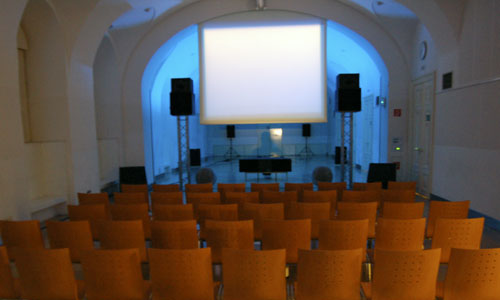
Prechtlsaal
Foto:Otto Jekel
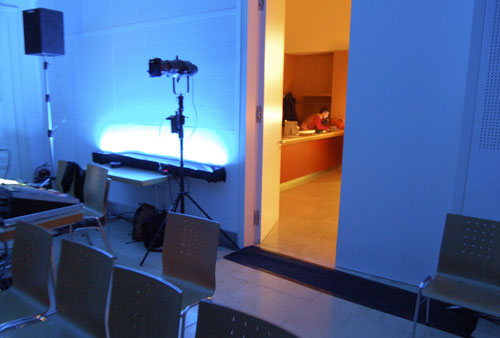
Prechtlsaal
Foto:Otto Jekel
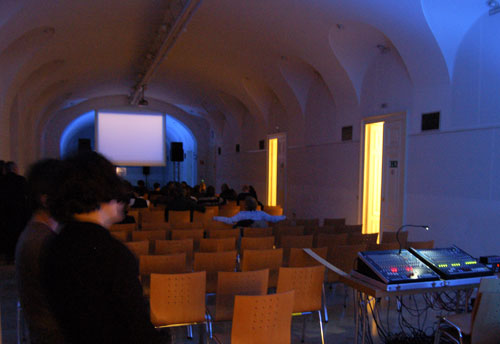
Prechtlsaal
Foto:Otto Jekel
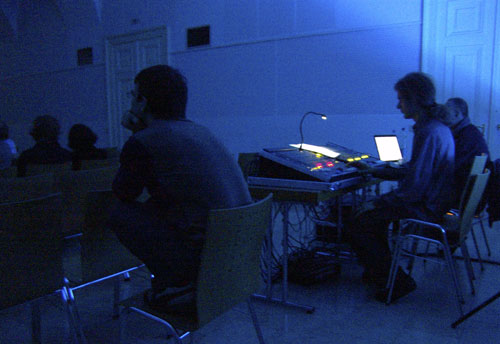
Prechtlsaal
Foto:Otto Jekel
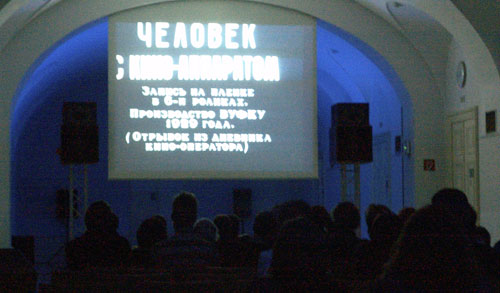
Prechtlsaal
Foto:Otto Jekel
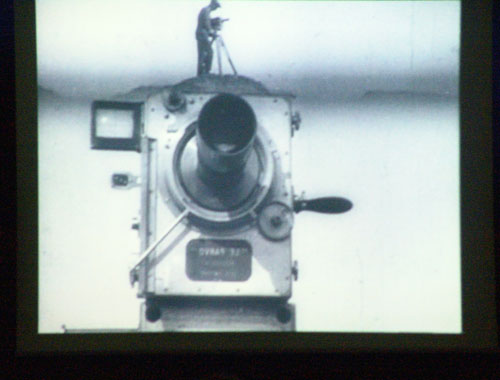
Foto:Otto Jekel
What? Another silent film score again! Haven’t we been downright bombarded with the like in the last few years! Hardly an old hat that wouldn’t have been dusted off, which musicians improvise to or receive composition commissions for (which could also be given to them anyway).
But this is a different matter altogether.
First of all, “Tschelowek s kinoapparatom” (“The Man
with a Movie Camera”) from Dziga Vertov is not a feature film.
It is fancied as a precursor to the documentary film, but this is also
debatable. Vertov referred to himself as a “film poet.”
“I do not write on paper, but rather on celluloid,” he noted
in his diary in 1934.
Secondly, the music that Pierre Henry created more than sixty years
later is anything other than a “scoring.” Henry was the
actual founder of the “musique concrète” at the beginning
of the Fifties (composition of music with recorded sound material on
audio tape) and until today, at the age of 82, he has undisputedly remained
its most prominent representative. As the “forefather” of
new electronic music and techno, he was (said somewhat simplified) rediscovered
in recent years – as the forerunner of “sampling,”
which he has consequently and radically been using for many decades
in his own way.
Creating this type of music has a deep affinity with the approach of
Vertov in his films, not only regarding the methods (montage), but also
in the relationship to reality – beyond all documentarism.
In the concurrence of both these independent, but kindred levels, a
new dimension of perception evolves. The performance makes allowance
for this concurrence. Picture and sound meet in a real space. Wholly
in the tradition of electro-acoustic music, Henry’s composition
will be played over many spatially divided speakers, with the projection
of Vertov's film enthroned in the middle.
A note for cineastes:
The version of the film that was made available to Henry in the scope
of the commissioned composition is obviously a copy of the originally
square film format on the later sound picture format 4:3 (minus an unneeded
audio track). That is regrettable, but for now there is no other possibility
to perform the complete work. It is still possible to see Vertov’s
film in its original version – in as far as one can even speak
of an “original version.” In the combination at hand, the
work unfolds a unique spatial power that one should, by all means, not
miss out on.
G.R.
translated by Brian Dorsey
the electroacoustic project / canto crudo
supported by: TU Wien / bm:ukk / Land Vorarlberg